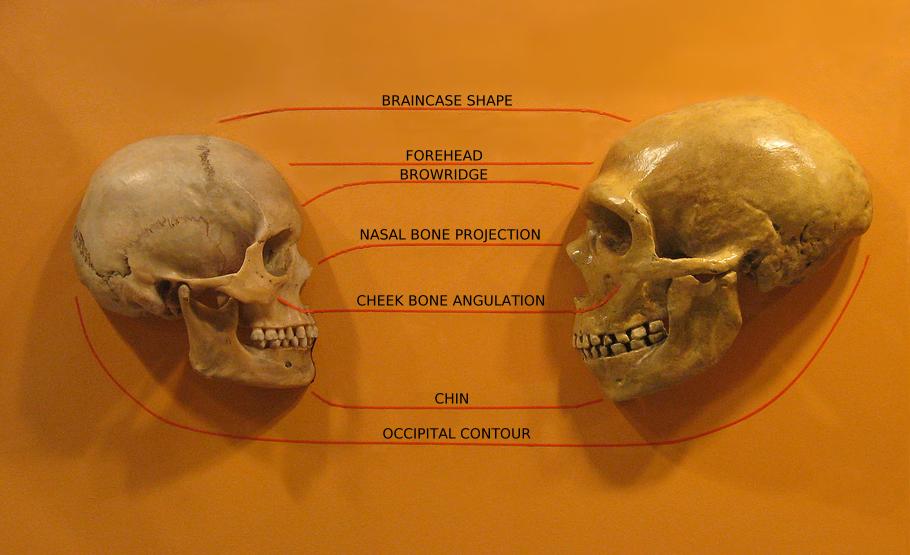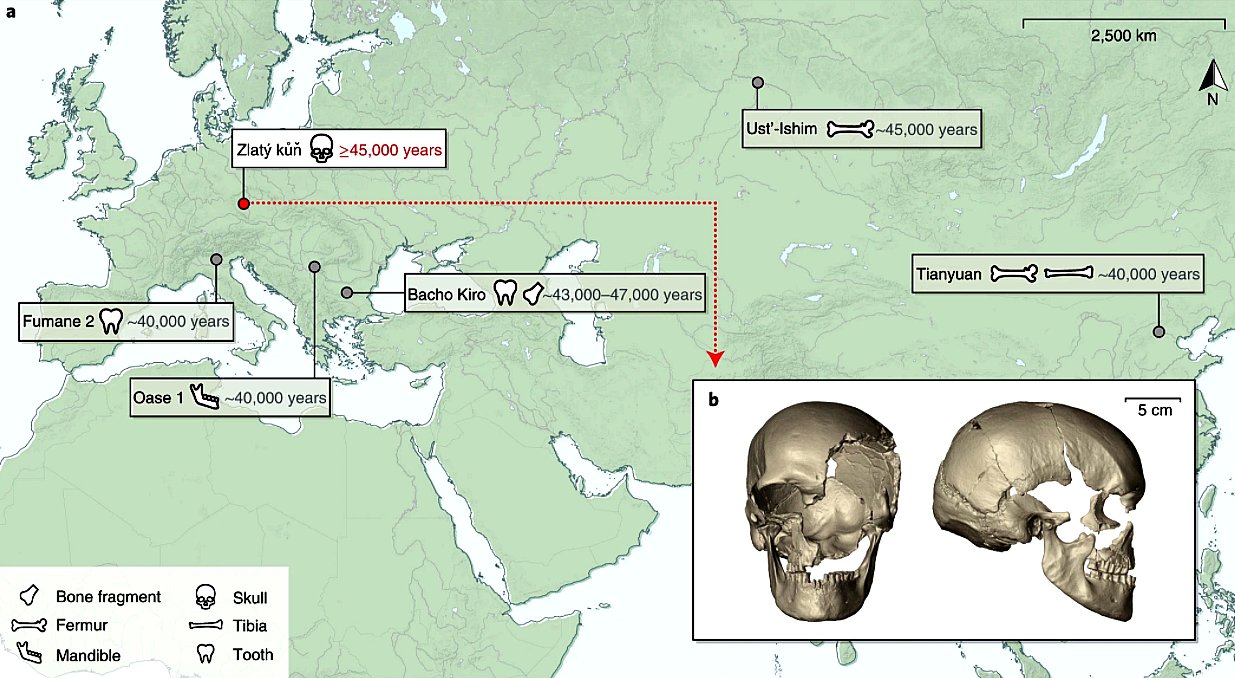| FOCUS | CREATION NEWS AND VIEWS |
Secret message not for aliens
Any Martians seeing the Perseverance Rover would obviously realize that it was intelligently made. They would probably wonder about the function of the rover and the debris left from the landing. But would they discover anything else about it?
One of the engineers who designed and tested the rover landing parachute, Allan Chen, embedded a secret message into the parachute’s fabric. This brings to mind the plaque on the side of Apollo 11, meant to be interpreted and understood by an alien intelligence coming across it. As a man inspired by Carl Sagan from the 1980s, was Chen’s message meant for future aliens to crack? What was spelled out in the secret coding within the specific pattern of colours on the parachute?

The message is written in binary code radiating outward from the centre. Each string of red and white stripes represents a single letter. These make up three words which are posted around NASA’s Jet Propulsion Laboratory Campus in California: ‘Dare mighty things’, from a speech by Theodore Roosevelt, the 26th US President (1901–1909). The message concludes with the location coordinates of the JPL campus.
The parachute’s secret message would hardly have any meaning to any hypothetical alien intelligences. They would have no reason to suspect any sort of coded message within the parachute colours anyway.
Unlike the Apollo 11 plaque, this was likely just a bit of fun. But it brings SETI (Search for ExtraTerrestrial Intelligence) to mind. Even a tiny code coming in from space would be seen as coming from an intelligent source. Meanwhile, the obvious proof of intelligence far surpassing that of humans—the encyclopedic information encoded on the DNA of living things—is ignored.
- Strickland, A.,‘Dare mighty things’: The man behind the secret message in the Mars rover’s parachute; edition.cnn.com, 27 Feb 2021.
- Spektor, B., There’s a secret code in the Mars rover’s parachute; livescience.com, 22 Feb 2021.
Stunning vegetation discovered beneath northwest Greenland
A 4.5‑m dirt core at the bottom of the Camp Century ice core in northwest Greenland yielded twigs, probably from spruce or fir trees, and leaves with inferred warmer temperatures. The core had been ‘lost’ for decades until found in a freezer in 2017. Scientists were stunned.
Lead researcher Andrew Christ said, “Ice sheets typically pulverize and destroy everything in their path, but what we discovered was delicate plant structures—perfectly preserved. They’re fossils, but they look like they died yesterday.”

Based on their long-age assumptions, climate scientists thought the ice should have continued over the area for at least 2.6 million years. However, the vegetation indicates that the ice sheet had melted much sooner—within the past one million years (in their thinking).
However, this sort of evidence is no surprise but expected by the biblical Ice Age model. In that model, at the beginning of the Ice Age, warm oceans surrounded Greenland after Noah’s Flood, just 4,500 years ago. Northwest Greenland would not have been glaciated until about 200 years later, allowing ample time for the vegetation to grow in a relatively warm climate.
- Christ, A.J. and 17 others, A multimillion-year-old record of Greenland vegetation and glacial history preserved in sediment beneath 1.4 km of ice at Camp Century, PNAS 118(13):1–8, 2021.
- Scientists stunned to discover plants beneath mile-deep Greenland ice, sciencedaily.com, 15 Mar 2021.
- Oard, M.J., Ice core oscillations and abrupt climate changes: part 1—Greenland ice cores, J. Creation 34(3):99–108, 2020.
Special Neanderthal Update
New evidence Neanderthals deliberately buried their dead
Did Neanderthals intentionally bury their dead? To help resolve this question, a research team presented new data on the La Ferrassie 8 (LF8) Neanderthal from France’s Dordogne region. LF8 is the partial skeleton of a two-year-old Neanderthal child found at the La Ferrassie rock shelter in the 1970s.
The authors reported that the remains were “very well preserved, despite belonging to a child which are generally more delicate.” Also, “the absence of carnivore marks, the low degree of spatial disturbance, fragmentation, and weathering suggest that they were rapidly covered by sediment.” After considering all their data, the researchers concluded:

… that a burial is the most parsimonious explanation for LF8. Our results show that LF8 is intrusive within an older (and archaeologically sterile) sedimentary layer. We propose that Neanderthals intentionally dug a pit in sterile sediments in which the LF8 child was laid. The skeleton was laid in an E (head)–W (pelvis) orientation (as are all the Neandertal skeletons found in the site for which we have information), with the head higher than the rest of the skeleton … .
This new evidence confirming that Neanderthals intentionally buried their dead adds yet more to the list of finds (see creation.com/apeman) indicating that Neanderthals were fully human descendants of Adam and Eve.
- Balzeau, A. and 13 others, Pluridisciplinary evidence for burial for the La Ferrassie 8 Neandertal child, Scientific Reports 10:21230, 9 Dec 2020.
Neanderthals and Homo sapiens used the same Nubian Technology

A multinational study re-examined a fossil and associated stone tools of the collections from Shukbah Cave in the Levant. The cave site was subject to extensive excavations in 1928. The fossil consisted of a single lower first molar tooth of a child. It was said to show “clear Neanderthal affinities”. The associated stone tools included what are known as Nubian Levallois points and cores. These types of tools were previously considered as exclusively made and used by Homo sapiens—i.e. modern type humans. The underlying assumption has been that this technology was too ‘advanced’ to have been made by allegedly ‘less evolved’ groups such as Neanderthals.
The authors stated that their “results indicate that any direct link between Nubian Levallois technology and Homo sapiens can no longer be assumed.” The Max Planck Society quoted Prof Simon Blockley as saying that the study “issues a timely note of caution that there are no straightforward links between particular hominins and specific stone tool technologies.”
Blinkhorn et al. noted that their finding represents the “first direct association between Neanderthals and Nubian Levallois technology”. They said it demonstrates “that this stone tool technology should not be considered an exclusive marker of Homo sapiens.”
This is one more piece of the accumulating evidence about Neanderthals consistent with the creationist view—i.e. that they were fully human descendants of Adam and Eve. That is, they are also in the same kind, Homo sapiens. They were not ‘primitive apemen’ or brutish, subhuman, distant cousins to ‘true humans’.
- Max Planck Society, Neanderthals and Homo sapiens used identical Nubian technology; phys.org, 15 Feb 2021.
Neanderthals heard and spoke just like modern humans
An international multidisciplinary team recently published a paper which examined Neanderthal and modern human skulls. They were trying to answer “one of the central questions in human evolutionary studies.” That is, whether any supposed human ancestor could speak—including the Neanderthals.
Virtual 3-D models of the ear structures of Homo sapiens and Neanderthals were made using CT scans. They were then tested using auditory software to calculate the hearing abilities up to 5 KHz. This “encompasses most of the frequency range of modern human speech sounds.” Neanderthals’ ability closely mirrored that of modern humans.

Furthermore, they were able to calculate the ‘occupied bandwidth’ (the frequency range of maximum sensitivity). In humans this allows us to perceive a wide range of acoustic signals, including consonants, crucial for fully developed language. Here too the Neanderthals’ range was similar to those of humans today.
The similar hearing and bandwidth of Neanderthal hearing “really is the key,” said Mercedes Conde-Valverde. This shows that they “possessed a communication system that was as complex and efficient as modern human speech.”
The belief that Neanderthals were somehow more primitive is massively out of date. Among other things, they buried their dead, made jewellery, manufactured pitch, built domiciles outside of caves, made clothing from animal skins, and interbred with sapiens-type humans. They were post-Babel descendants of Noah who had the same anatomical design to communicate as any other human.
- Conde-Valverde, M, and 9 others, Neanderthals and Homo sapiens had similar auditory and speech capacities, Nat. Ecol. Evol., 1 Mar 2021.
- Binghamton University, New research shows Neanderthals had the capacity to perceive and produce human speech, scitechdaily.com, 1 Mar 2021.
More interbreeding between Neanderthals and modern humans
Modern humans supposedly arrived in Europe around 45 thousand years ago (ka). Evolutionists believe Neanderthals disappeared by about 40 ka, leaving a few thousand years when both modern humans and Neanderthals lived in Europe at the same time. Two recent papers presented genomic analysis of some of the allegedly earliest modern humans in Europe. Hajdinjak et al. presented data from three individuals from Bacho Kiro Cave, Bulgaria (dated to between 45.93 and 42.58 ka), whereas Prüfer et al. analyzed a female skull from Zlatý kůň cave, Czechia (dated to ~45 ka).

It was found that the three Bacho Kiro Cave individuals (comprising a molar and two bone fragments) carried 3.0%–3.8% Neanderthal DNA. Hajdinjak et al. said that these individuals were “more closely related to present-day and ancient populations in East Asia and the Americas than to later west Eurasian populations.” The genome of the skull from Czechia carried about 3% Neanderthal DNA, and according to Prüfer et al. “belonged to a population that appears to have contributed genetically neither to later Europeans nor to Asians.” Callaway mentions Viviane Slon, a paleogeneticist at the University of Tel Aviv, as stating that the “research adds to growing evidence that modern humans mixed regularly with Neanderthals and other extinct relatives.” Yet more proof that Neanderthals were fully human.
The Czechian skull has been radiocarbon dated several times, yielding approximate dates of 15, 27, 19, and 34 ka. But Callaway says that “on the basis of its Neanderthal ancestry, Krause [co-leader of the study] suspects it is well over 45,000 years old.” The radiocarbon dates, which would not fit the standard evolutionary tale, are conveniently rejected as being artificially young from supposed contamination.
- Callaway, E. Oldest DNA from Homo sapiens reveals surprisingly recent Neanderthal ancestry, nature.com, 7 Apr 2021.
- Hajdinjak, M. and 31 others, Initial Upper Palaeolithic humans in Europe had recent Neanderthal ancestry, Nature 592:253–257, 8 Apr 2021.
- Prüfer, K. and 10 others, A genome sequence from a modern human skull over 45,000 years old from Zlatý kůň in Czechia, Nature Ecol. Evol., 7 Apr 2021.
Fossil dinosaur sitting on nest of eggs with embryos
A fossilized adult oviraptorid theropod dinosaur has been uncovered in rocks in Ganzhou City, China. The mother dinosaur was sitting on at least 24 eggs and seven preserved bones of partial embryos. “Dinosaurs preserved on their nests are rare, and so are fossil embryos. This is the first time a non-avian dinosaur has been found sitting on a nest of eggs that preserve embryos, in a single spectacular specimen,” said Shundong Bi, one of the lead authors.

Due to the brooding posture, it is thought the dinosaur was in the process of incubating the eggs, each about 21.5 × 8.5 cm (8.5 × 2.5ʺ). The embryos were in the late stages of development, so the mother dinosaur had looked after the eggs for some time. The specimen also preserved a cluster of pebbles in her abdominal region thought to be gastroliths, or ‘stomach stones’. These were deliberately swallowed, to help the dinosaur digest its food.
The research paper gave no explanation as to how the spectacularly preserved fossil was formed. In order to preserve the dinosaur, eggs, and embryos before they could decay, these (like countless billions of other fossils) would need to have been covered rapidly by sediment. Yet this had to happen in such a way as to not disrupt the general arrangement of this maternal scene, explaining the extreme rarity of such finds.
Rather than being an alleged 70 million years old, the rocks enclosing them were formed in the Noahic Flood around 4,500 years ago. Such a global catastrophe would have transported and laid down huge amounts of sediment under many complex and differing sets of conditions.
- Bi, S. and 10 others, An oviraptorid preserved atop an embryo-bearing egg clutch sheds light on the reproductive biology of non-avialan theropod dinosaurs, Science Bulletin, 16 Dec 2020.
- Elassar, A., Researchers discover a dinosaur preserved sitting on a nest of eggs with fossilized embryos, a first, edition.cnn.com, 13 Mar 2021.
Divided Dawkins
Such is the fame of celebrity UK atheist Richard Dawkins that British sociologist Professor Margaret Woodley devised a ‘Dawkins Indicator’ as a measure of community “irreligious feelings”.
Evidently Richard is pleased with the rise of the Dawkins Indicator in the UK. The website of his Richard Dawkins Foundation highlighted a recent editorial in The Guardian which concluded that: “Post-Christian Britain is now a fait accompli.” The forthcoming British census is expected to reveal that fewer than half of Britons describe themselves as Christian. Noting this, his Foundation’s website gloated: “Naturally, Richard Dawkins has had an outsized role in these changes”.
Very likely so, given Dawkins’ long and unwavering promotion of evolution as fact, and his overt hostility to the teaching of the Bible’s account of history. He has even dubbed the teaching of creation to children as ‘child abuse’, e.g. in his fiercely anti-Christian book The God Delusion (see creation.com/abuse).
But Richard’s view of Christianity is actually divided against itself, as in recent years he has reportedly made statements lamenting the decline of religion. E.g. “Ending religion is a bad idea.” Why? “People may feel free to do bad things because they feel God is no longer watching them.”
Similarly, noting that security camera surveillance of customers in shops did appear to deter shoplifting, Dawkins feared that people might feel less restrained without a “divine spy camera in the sky reading their every thought”.
©123rf.com/Sakarin SawasdinakaWe have earlier quoted (e.g. creation.com/king-hit) similar sentiments from Dawkins’ fellow British atheist A.C. Grayling, who joked: “You can see we no longer really believe in God, because of all the cameras keeping watch on us.”
- Positive signs on the Dawkins Indicator, richarddawkins.net, 31 Mar 2021.
- Editorial—The Guardian view on ‘post-Christian’ Britain: a spiritual enigma, theguardian.com, 29 Mar 2021.
- Sanderson, D., Ending religion is a bad idea, says Richard Dawkins, thetimes.co.uk, 5 Oct 2019.
‘Stone Age’ man extracted salt from seawater
It’s amazing what archaeology can dig up. New Scientist reported that “Stone Age Britons extracted salt from seawater using industrial-style processes more than 5,500 years ago.”
It was archaeologist Stephen Sherlock who discovered ancient salt-making kilns near the town of Loftus in north-east England. Fragments of ceramic pottery had salt on their interior surfaces. A hazelnut shell found in hearth charcoal was used to ‘radiocarbon date’ the site.
The discovery surprised many, given it means “people in Great Britain were producing salt thousands of years earlier than thought, before the Bronze Age.” Sherlock recounted how when he showed the finds to salt-making experts, “They said you’d expect to find that in the Iron Age.”

Sherlock added: “It changes how we think about Neolithic society.”
Indeed. But so also should the incongruity of the notion that people said to be of the ‘Stone Age’ used industrial-style processes. In stark contrast to the claimed ‘dating’ and oft-rewritten evolutionary ‘history’ of man, the Bible gives us a reliable historical account. The ancient Britons that Sherlock speaks of were, like us, all descendants of Noah. About 4,500 years ago he and his family survived the global Flood (Genesis 6–9) aboard a giant purpose-built Ark. Between creation (about 6,000 years ago) and the Flood, man was already making all kinds of tools out of bronze and iron (Genesis 4:22).
So much for the widespread belief about a ‘Stone Age’, then a ‘Bronze Age’, long before anyone made iron tools. People have always been intelligent and resourceful (even when forebears’ knowledge, experience, and technology had not been passed down to them).
- Marshall, M., Ancient Britons extracted salt from seawater more than 5500 years ago, newscientist.com, 31 Mar 2021.
- Sherlock, S., Early Neolithic salt production at Street House, Loftus, north-east England, Antiquity, cambridge.org, 31 March 2021.
Have scientists finally made life?

A new synthetic life form? Does it disprove God?
This is déjà vu—our response is not much different in principle from what CMI wrote about a similar synthetic life claim 10 years ago (creation.com/venter). It took an enormous amount of intelligence to make this cell, and they borrowed a lot of information from already-existing cells.
It does show that previous claims of synthetic life were probably overstated, since the previous synthetic cells couldn’t reproduce properly. The latest work shows the immense complexity required for a cell to produce two identical daughter cells, i.e. truly reproduce. This requires both DNA replication and making sure the machinery is duplicated and lands in the correct membranes of the two new cells. To achieve this, the researchers needed to put back genes previously thought to be unnecessary for life.
But even this new cell is described as “delicate … Tiny forces can tear them apart.” Doesn’t sound like something that would last long in the (mythical) primordial soup, even if it could arise in the first place.
It also shows that more genes are needed for minimal life than was thought a few years ago; cf. creation.com/simple. Now the number is about as high as that in the simplest naturally occurring life, the Mycoplasmas. But their history is clearly not from simpler organisms; they are parasites that devolved from more complex cells.
For much more on this work, see creation.com/synthetic-life-really.
- Pelletier, J.F. and 11 others, Genetic requirements for cell division in a genomically minimal cell, Cell, published online 29 Mar 2021.
- Scientists create simple synthetic cell that grows and divides normally, nist.gov, 29 Mar 2021.


Readers’ comments
Comments are automatically closed 14 days after publication.